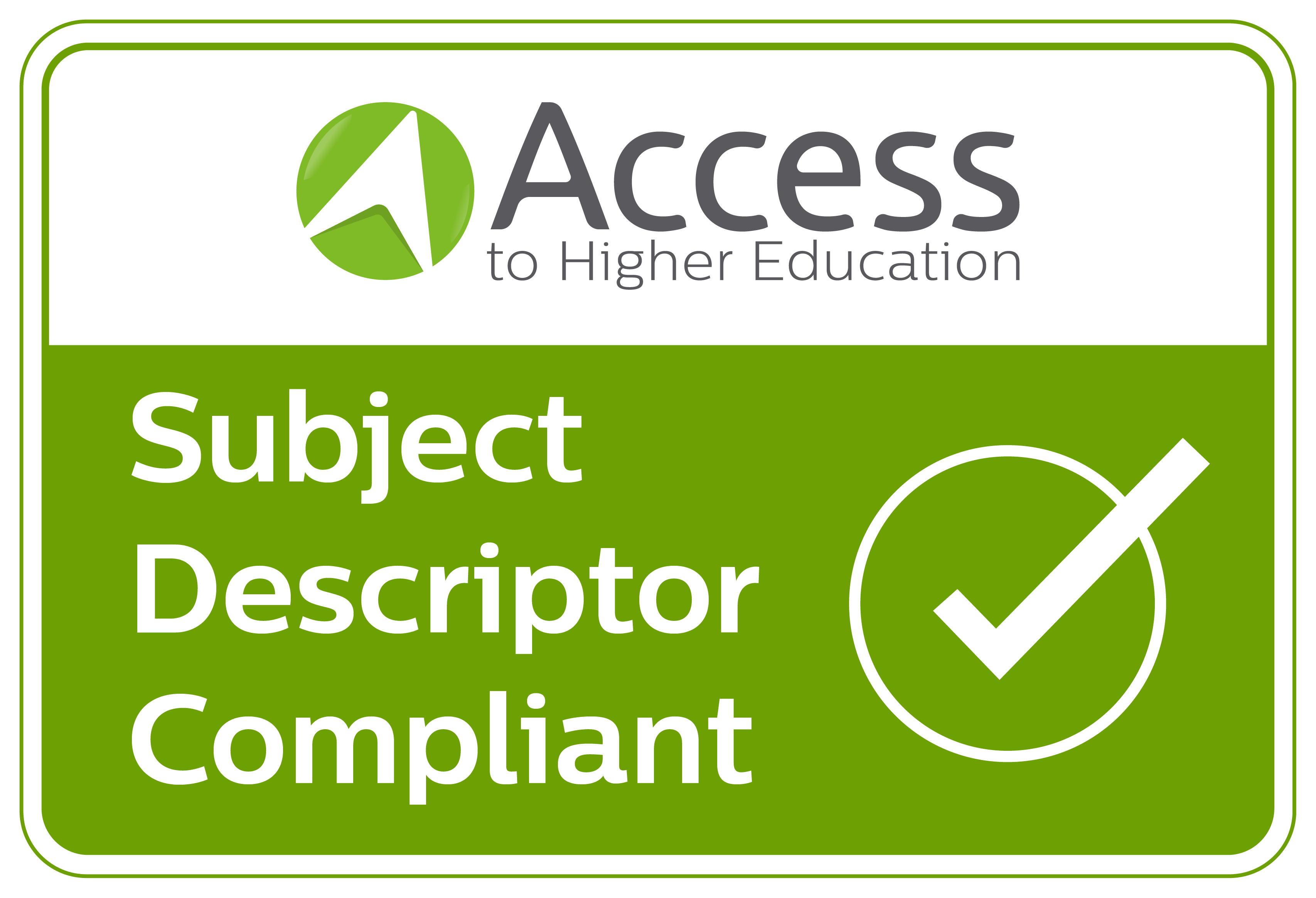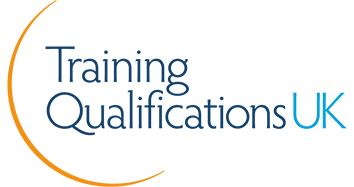Study Radiography Access Course Online
 88%
88%
- SALE Savings End Midnight Tuesday 13th January
- SALE Savings End Midnight Tuesday 13th January
Access to Higher Education Diploma (Radiography)
Your Course at a Glance
- Go to university without A-Levels
- Explore the properties and applications of the electromagnetic spectrum
- Get prepared for degree-level study
- Kick-start a career in radiography
- Study from the comfort of your own home
- No exams
About Your Diploma
Radiography is a crucial part of healthcare practices as it is a technique that is used across the board. This form of imaging is used to detect abnormalities or issues relating to the human body, from bones to organs.
To take and diagnose these images, you need to be a trained professional, and if this is something that interests you, then you can begin your career path by studying for an Access to Higher Education Diploma (Radiography).
You will study the structure and function of cells, atoms, bonds and structure, plus waves, ECGs and radiography.
As part of your studies, you will also explore radioactivity in medicine as well as professionalism and multidisciplinary teams.
The course, and the degree you’ll be eligible to study after, will provide you with a diverse range of knowledge and skills that will be invaluable wherever your career takes you.
An Access to Higher Education Diploma is the equivalent to 3 A Levels and it is widely accepted as the alternative to A Levels during university applications. Please note, though, that you should check with your chosen university before applying.
The purpose of this course is to not only provide you with foundational knowledge about radiography, but also enhance your study skills to help you navigate through your degree.
What Happens After Your Course?
Turn your diploma into a degree
Our Progression Service helps you explore options and apply to university
Getting Started
The course is developed by subject experts, in conjunction with universities to ensure the material will be of the greatest value to you when you start your degree.
This Access to Higher Education Diploma (Radiography) is an online course that gives you the freedom to study from the comfort of your own home. You will also be able to begin learning as soon as you enrol as you will be given 24/7 access to all the course materials you need.
As part of your course, you will be provided with an Individual Learning Plan that outlines the submission deadlines for your assignments to help keep you on track throughout your studies. An Access to Higher Education Diploma can be completed over two years although on average, learners take 9 months to achieve their qualification.
learndirect is the UK’s leading online course provider, so you can be confident that you will get the support you need to succeed. In addition to our industry-leading learning platform, we’ll also provide you with a dedicated team of tutors who will help you throughout your studies. They will answer questions, mark your assignments, and provide detailed feedback. This will allow you to get the best possible grade and meet your learning goals.

Modules
Module 1: Academic Writing Skills
Upon successful completion of this module, you will:
- Be able to structure a written response
- Be able to develop a structured response to a plan
- Be able to present the response appropriately for audience and purpose
- Understand how to apply academic writing principles to own work
Module 2: Reading and Note Making
Upon successful completion of this module, you will:
- Understand a range of reading strategies
- Understand the use of language in terms of the purpose and context of a range of texts
- Be able to use methods for developing notes from a range of sources
Module 3: Professional Behaviours: Nursing and Health Professionals
Upon successful completion of this module, you will:
- Understand the characteristics required to be a health professional making reference to the relevant professional and regulatory body's and the Professional Standards Authority standards for registration in relation to, patient-centred care and concepts of professionalism as they apply to conduct, performance and ethics of those on the relevant professional and regulatory body's register
- Understand effective communication and teamworking skills
- Know how to manage risk and deal effectively with problems
- Reflect on own personal and professional practice and develop a personal and professional development plan
Module 4: Atoms, Bonds and Structure
Upon successful completion of this module, you will:
- Understand atomic structure
- Understand bonding, structure and properties
- Be able to analyse intermolecular forces
Module 5: The Structure and Function of Cells
Upon successful completion of this module, you will:
- Understand cellular structure and organisation
- Be able to analyse cellular activity
- Be able to analyse the cell cycle
Module 6: The Properties and Applications of the Electromagnetic Spectrum
Upon successful completion of this module, you will:
- Understand electromagnetic waves
- Understand visible and ultraviolet light including their applications
- Understand microwaves and infrared light
- Understand ultraviolet light and infrared light in terms of their potential to become hazardous
- Understand the use of x-rays in medical settings
Module 7: Human Musculoskeletal System
Upon successful completion of this module, you will:
- Understand the human skeleton and how it relates to locomotion
- Be able to analyse muscle contraction
- Understand the development of bone
Unit 8: Numeracy in a Health Context
Upon successful completion of this module, you will:
- Understand and use the four rules of number, including in relation to units of measure
- Understand and use decimals, fractions and percentages, including in relation to units of measure
- Know how to use a calculator to solve problems and use appropriate tools to check their answers
Module 9: The Laws of Physics
Upon successful completion of this module, you will:
- Understand force and motion
- Understand energy conservation and momentum
- Understand wave motion
- Understand reflection and refraction
- Understand magnetism and electrical current behaviours
Module 10: Chemistry of Drugs and Medicines
Upon successful completion of this module, you will:
- Understand the key definitions used in medicinal chemistry
- Understand the significance of the molecular structure of drugs upon their function
- Understand analytic methods used for drug detection
- Understand the importance of isomerism in drug action
- Be able to analyse common processes involved in drug design
Module 11: Endocrine System
Upon successful completion of this module, you will:
- Understand terms hormone and endocrine gland
- Be able to analyse homeostasis and feedback mechanisms
- Understand the action of hormones
Module 12: Medical Physics: Waves ECGs and Radiography
Upon successful completion of this module, you will:
- Understand the structure of the ear, the process of hearing and identify and explain simple methods of detecting hearing abnormalities through interpretation of simple tests
- Understand the electromagnetic spectrum and explain how different types of electromagnetic waves are used in medical physics
- Understand medical uses of ultrasound imaging techniques
- Understand therapeutic uses of radioactivity
- Be able to analyse techniques used to monitor the functioning of the nervous and cardiovascular systems
Module 13: Nervous System
Upon successful completion of this module, you will:
- Understand the basic structure and function of the nervous system
- Understand the nature of nerve impulses
- Be able to assess the prinicples of synaptic transmission
Module 14: Kinetics, Energetics, Equilibria and Acid-Base Equilibria
Upon successful completion of this module, you will:
- Understand chemical kinetics
- Understand energetics
- Understand chemical equilibria
- Understand acid-base equilibria
Module 15: Radioactivity in Medicine
Upon successful completion of this module, you will:
- Understand the nature of radioactive decay
- Understand the need for safety precautions when handling radioactive isotopes
- Analyse the beneficial uses of radioactive isotopes
In addition to the qualification units, you will also be required to complete a course induction which comprises of three short introductory tasks to support the development of your academic study skills.
Entry Requirements
To study an Access to HE Diploma you must be resident in the UK and have a UK postcode.
You must hold Level 2 qualifications in both English and Maths, or be working towards them alongside studying your Access to Higher Education Diploma.
University Entry Criteria
It must be reiterated that each university will set its own admission criteria. So, you must check with your desired institution if your Access to HE Diploma and other qualifications will be accepted. In many cases, to get started at university you will need: - A certain number of credits passed with a merit or a distinction grade - A face-to-face interview at the university - Literacy and numeracy assessments provided by the university - Course-related work placements or work experience - GCSE Grade C/4 or above in Maths and English (or equivalent Level 2 such as Functional Skills/Key Skills, etc.) It is your responsibility to check that your Access to HE Diploma will be accepted as part of these entry requirements for your chosen degree. learndirect will not be held accountable if completing this Access to Higher Education Diploma doesn’t secure you a position with a higher education institution.
Minimum age restriction
Access to HE Diplomas are designed to support students to progress to university who have substantial experience of life outside of formal education which they have gained since completing compulsory schooling.
Average completion timeframe
The average time it takes our learners to complete the course is 9-12 months.
Assessment requirements
A range of assessment methodologies are used, including: essay, scenario analysis, illustrated report, experiment, presentation (video and audio recording), series of questions, academic writing skills tasks.
In addition to the qualification units, you will also be required to complete a course induction which comprises of three short introductory tasks to support the development of your academic study skills.
Exams required
There are no exams included in the assessment of the course.
Is Membership Required?
No membership is required to enrol on this course.
Additional requirements
Learners must be actively studying for a minimum of six months before results can be ratified and certificates ordered. The six month period does not start until you have completed and passed the course induction and you must be submitting assignments regularly (in line with the deadlines in your Individual Learning Plan) to meet this six month requirement. Certificates can only be issued once your course is paid for in full.
Certification Timeframe
You can expect to receive your certificate 12-16 weeks from your final assignment being marked and graded, depending on the time of year. You will be provided with regular updates throughout the certification process so that you are fully informed of your individual timeframes.
Course Fees
All course fees, inclusive of all payment plans including our Premium Credit Limited option, must be settled before certification can be ordered.
*You will have access to the course for 24 months.

A range of units make up this qualification, with an assignment at the end of each. You will submit your work to your tutor for marking and tailored feedback. You must acquire 60 credits in total in order to achieve the Access to Higher Education Diploma (Radiography). Of these credits, 45 will be taken from graded units which focus on the academic subject areas included in the course. The remaining 15 come from ungraded units included to help you to improve your academic writing and study skills.
In addition to the qualification units, you will also be required to complete a course induction which comprises of three short introductory tasks to support the development of your academic study skills.
As part of your programme, you will also receive help as well as guidance on your university application and the research you need to do to get the most out of your diploma.
Skills & Education Group Access

On successful completion of the Access to Higher Education Diploma (Radiography), (QAA aim code: 4001471X), you will receive a Skills & Education Group Access, QAA recognised, Access to Higher Education Diploma at Level 3. As part of your programme, you will also receive help as well as guidance on your university application and the research you need to do to get the most out of your diploma.
An access validating agency with a strong social purpose to recognise achievement, particularly for those who have benefited least from their previous educational experiences, Skills and Education Group Access supports the needs of learners, providers, businesses and communities by enabling progression into higher education.
Developing Your Career
Given that this Access to Higher Education Diploma specialises in radiography, you will be well placed to pursue a career in this sector. You will gain a solid understanding of this essential process, which will make you a desirable candidate for universities.
Once you have achieved your degree, you will be able to pursue a job position, but it is important to note that to work as a radiographer, you will need to be registered with the Health and Care Professions Council.
If you become a radiographer at practitioner level, then you could become a therapeutic radiographer, who focuses on planning and administering radiotherapy treatment. Alternatively, you may want to work as a diagnostic radiographer, who takes images to diagnose illnesses and injuries. If you go down this route, then you will likely work with the following methods:
- Angiography
- Computed tomography
- Fluoroscopy
- MRI
- X-ray
- Ultrasound
Further Qualifications and Prospects
To achieve a step up in your radiography career, you could embark on postgraduate study to become an advanced practitioner, making you the expert voice in your industry. From a clinical perspective, you could specialise in the following areas:
- Management and leadership
- Research and service development
- Education
You can also undertake postgraduate qualifications and training to become a consultant or an educator in your field.
Frequently Asked Questions
- SALE Savings End Midnight Tuesday 13th January
- SALE Savings End Midnight Tuesday 13th January
Access to Higher Education Diploma (Radiography)
Your Course at a Glance
- Go to university without A-Levels
- Explore the properties and applications of the electromagnetic spectrum
- Get prepared for degree-level study
- Kick-start a career in radiography
- Study from the comfort of your own home
- No exams
About Your Diploma
Radiography is a crucial part of healthcare practices as it is a technique that is used across the board. This form of imaging is used to detect abnormalities or issues relating to the human body, from bones to organs.
To take and diagnose these images, you need to be a trained professional, and if this is something that interests you, then you can begin your career path by studying for an Access to Higher Education Diploma (Radiography).
You will study the structure and function of cells, atoms, bonds and structure, plus waves, ECGs and radiography.
As part of your studies, you will also explore radioactivity in medicine as well as professionalism and multidisciplinary teams.
The course, and the degree you’ll be eligible to study after, will provide you with a diverse range of knowledge and skills that will be invaluable wherever your career takes you.
An Access to Higher Education Diploma is the equivalent to 3 A Levels and it is widely accepted as the alternative to A Levels during university applications. Please note, though, that you should check with your chosen university before applying.
The purpose of this course is to not only provide you with foundational knowledge about radiography, but also enhance your study skills to help you navigate through your degree.
What Happens After Your Course?
Turn your diploma into a degree
Our Progression Service helps you explore options and apply to university
Getting Started
The course is developed by subject experts, in conjunction with universities to ensure the material will be of the greatest value to you when you start your degree.
This Access to Higher Education Diploma (Radiography) is an online course that gives you the freedom to study from the comfort of your own home. You will also be able to begin learning as soon as you enrol as you will be given 24/7 access to all the course materials you need.
As part of your course, you will be provided with an Individual Learning Plan that outlines the submission deadlines for your assignments to help keep you on track throughout your studies. An Access to Higher Education Diploma can be completed over two years although on average, learners take 9 months to achieve their qualification.
learndirect is the UK’s leading online course provider, so you can be confident that you will get the support you need to succeed. In addition to our industry-leading learning platform, we’ll also provide you with a dedicated team of tutors who will help you throughout your studies. They will answer questions, mark your assignments, and provide detailed feedback. This will allow you to get the best possible grade and meet your learning goals.

Modules
Module 1: Academic Writing Skills
Upon successful completion of this module, you will:
- Be able to structure a written response
- Be able to develop a structured response to a plan
- Be able to present the response appropriately for audience and purpose
- Understand how to apply academic writing principles to own work
Module 2: Reading and Note Making
Upon successful completion of this module, you will:
- Understand a range of reading strategies
- Understand the use of language in terms of the purpose and context of a range of texts
- Be able to use methods for developing notes from a range of sources
Module 3: Professional Behaviours: Nursing and Health Professionals
Upon successful completion of this module, you will:
- Understand the characteristics required to be a health professional making reference to the relevant professional and regulatory body's and the Professional Standards Authority standards for registration in relation to, patient-centred care and concepts of professionalism as they apply to conduct, performance and ethics of those on the relevant professional and regulatory body's register
- Understand effective communication and teamworking skills
- Know how to manage risk and deal effectively with problems
- Reflect on own personal and professional practice and develop a personal and professional development plan
Module 4: Atoms, Bonds and Structure
Upon successful completion of this module, you will:
- Understand atomic structure
- Understand bonding, structure and properties
- Be able to analyse intermolecular forces
Module 5: The Structure and Function of Cells
Upon successful completion of this module, you will:
- Understand cellular structure and organisation
- Be able to analyse cellular activity
- Be able to analyse the cell cycle
Module 6: The Properties and Applications of the Electromagnetic Spectrum
Upon successful completion of this module, you will:
- Understand electromagnetic waves
- Understand visible and ultraviolet light including their applications
- Understand microwaves and infrared light
- Understand ultraviolet light and infrared light in terms of their potential to become hazardous
- Understand the use of x-rays in medical settings
Module 7: Human Musculoskeletal System
Upon successful completion of this module, you will:
- Understand the human skeleton and how it relates to locomotion
- Be able to analyse muscle contraction
- Understand the development of bone
Unit 8: Numeracy in a Health Context
Upon successful completion of this module, you will:
- Understand and use the four rules of number, including in relation to units of measure
- Understand and use decimals, fractions and percentages, including in relation to units of measure
- Know how to use a calculator to solve problems and use appropriate tools to check their answers
Module 9: The Laws of Physics
Upon successful completion of this module, you will:
- Understand force and motion
- Understand energy conservation and momentum
- Understand wave motion
- Understand reflection and refraction
- Understand magnetism and electrical current behaviours
Module 10: Chemistry of Drugs and Medicines
Upon successful completion of this module, you will:
- Understand the key definitions used in medicinal chemistry
- Understand the significance of the molecular structure of drugs upon their function
- Understand analytic methods used for drug detection
- Understand the importance of isomerism in drug action
- Be able to analyse common processes involved in drug design
Module 11: Endocrine System
Upon successful completion of this module, you will:
- Understand terms hormone and endocrine gland
- Be able to analyse homeostasis and feedback mechanisms
- Understand the action of hormones
Module 12: Medical Physics: Waves ECGs and Radiography
Upon successful completion of this module, you will:
- Understand the structure of the ear, the process of hearing and identify and explain simple methods of detecting hearing abnormalities through interpretation of simple tests
- Understand the electromagnetic spectrum and explain how different types of electromagnetic waves are used in medical physics
- Understand medical uses of ultrasound imaging techniques
- Understand therapeutic uses of radioactivity
- Be able to analyse techniques used to monitor the functioning of the nervous and cardiovascular systems
Module 13: Nervous System
Upon successful completion of this module, you will:
- Understand the basic structure and function of the nervous system
- Understand the nature of nerve impulses
- Be able to assess the prinicples of synaptic transmission
Module 14: Kinetics, Energetics, Equilibria and Acid-Base Equilibria
Upon successful completion of this module, you will:
- Understand chemical kinetics
- Understand energetics
- Understand chemical equilibria
- Understand acid-base equilibria
Module 15: Radioactivity in Medicine
Upon successful completion of this module, you will:
- Understand the nature of radioactive decay
- Understand the need for safety precautions when handling radioactive isotopes
- Analyse the beneficial uses of radioactive isotopes
In addition to the qualification units, you will also be required to complete a course induction which comprises of three short introductory tasks to support the development of your academic study skills.
Entry Requirements
To study an Access to HE Diploma you must be resident in the UK and have a UK postcode.
You must hold Level 2 qualifications in both English and Maths, or be working towards them alongside studying your Access to Higher Education Diploma.
University Entry Criteria
It must be reiterated that each university will set its own admission criteria. So, you must check with your desired institution if your Access to HE Diploma and other qualifications will be accepted. In many cases, to get started at university you will need: - A certain number of credits passed with a merit or a distinction grade - A face-to-face interview at the university - Literacy and numeracy assessments provided by the university - Course-related work placements or work experience - GCSE Grade C/4 or above in Maths and English (or equivalent Level 2 such as Functional Skills/Key Skills, etc.) It is your responsibility to check that your Access to HE Diploma will be accepted as part of these entry requirements for your chosen degree. learndirect will not be held accountable if completing this Access to Higher Education Diploma doesn’t secure you a position with a higher education institution.
Minimum age restriction
Access to HE Diplomas are designed to support students to progress to university who have substantial experience of life outside of formal education which they have gained since completing compulsory schooling.
Average completion timeframe
The average time it takes our learners to complete the course is 9-12 months.
Assessment requirements
A range of assessment methodologies are used, including: essay, scenario analysis, illustrated report, experiment, presentation (video and audio recording), series of questions, academic writing skills tasks.
In addition to the qualification units, you will also be required to complete a course induction which comprises of three short introductory tasks to support the development of your academic study skills.
Exams required
There are no exams included in the assessment of the course.
Is Membership Required?
No membership is required to enrol on this course.
Additional requirements
Learners must be actively studying for a minimum of six months before results can be ratified and certificates ordered. The six month period does not start until you have completed and passed the course induction and you must be submitting assignments regularly (in line with the deadlines in your Individual Learning Plan) to meet this six month requirement. Certificates can only be issued once your course is paid for in full.
Certification Timeframe
You can expect to receive your certificate 12-16 weeks from your final assignment being marked and graded, depending on the time of year. You will be provided with regular updates throughout the certification process so that you are fully informed of your individual timeframes.
Course Fees
All course fees, inclusive of all payment plans including our Premium Credit Limited option, must be settled before certification can be ordered.
*You will have access to the course for 24 months.

Assessment
A range of units make up this qualification, with an assignment at the end of each. You will submit your work to your tutor for marking and tailored feedback. You must acquire 60 credits in total in order to achieve the Access to Higher Education Diploma (Radiography). Of these credits, 45 will be taken from graded units which focus on the academic subject areas included in the course. The remaining 15 come from ungraded units included to help you to improve your academic writing and study skills.
In addition to the qualification units, you will also be required to complete a course induction which comprises of three short introductory tasks to support the development of your academic study skills.
As part of your programme, you will also receive help as well as guidance on your university application and the research you need to do to get the most out of your diploma.
Qualifications
Skills & Education Group Access

On successful completion of the Access to Higher Education Diploma (Radiography), (QAA aim code: 4001471X), you will receive a Skills & Education Group Access, QAA recognised, Access to Higher Education Diploma at Level 3. As part of your programme, you will also receive help as well as guidance on your university application and the research you need to do to get the most out of your diploma.
An access validating agency with a strong social purpose to recognise achievement, particularly for those who have benefited least from their previous educational experiences, Skills and Education Group Access supports the needs of learners, providers, businesses and communities by enabling progression into higher education.
Developing Your Career
Given that this Access to Higher Education Diploma specialises in radiography, you will be well placed to pursue a career in this sector. You will gain a solid understanding of this essential process, which will make you a desirable candidate for universities.
Once you have achieved your degree, you will be able to pursue a job position, but it is important to note that to work as a radiographer, you will need to be registered with the Health and Care Professions Council.
If you become a radiographer at practitioner level, then you could become a therapeutic radiographer, who focuses on planning and administering radiotherapy treatment. Alternatively, you may want to work as a diagnostic radiographer, who takes images to diagnose illnesses and injuries. If you go down this route, then you will likely work with the following methods:
- Angiography
- Computed tomography
- Fluoroscopy
- MRI
- X-ray
- Ultrasound
Further Qualifications and Prospects
To achieve a step up in your radiography career, you could embark on postgraduate study to become an advanced practitioner, making you the expert voice in your industry. From a clinical perspective, you could specialise in the following areas:
- Management and leadership
- Research and service development
- Education
You can also undertake postgraduate qualifications and training to become a consultant or an educator in your field.
Frequently Asked Questions
 88%
88%
learning
learning hours





















 If you find this course cheaper anywhere
If you find this course cheaper anywhere

